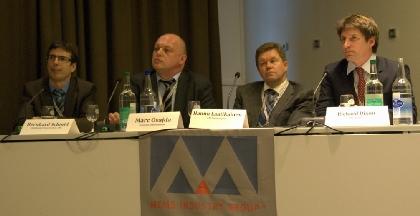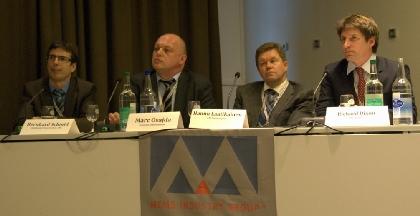MEMS Sensors Driving Smart Automotive
April 9, 2012

Rapid advances in intelligent automotive systems were showcased during the first European edition of the MEMS Executive Congress. Such systems can tell whether a child is in the street and enable the car to avoid impact. MEMS can ensure that a driver is not inebriated before getting behind the wheel; this is already a reality in France, and would seem to beat the pants off the old-fashioned Breathalyzer.
MEMS can make a car smarter in how it utilizes and conserves energy and power through energy harvesting. It can make a car easier to drive, through sensor-enabled steering that senses the curvature of the road and accounts for torque and speed. (Now that would certainly come in handy on California's Pacific Coast Highway or the Autobahn.) MEMS make drivers safer and smarter with anti-roller stability, airbags, and tire-pressure monitors. And after experiencing the keynote by Markus Buhlmann, "The MEMS-Enabled Automobile -- An Inside Look at Audi's Vorsprung durch Technik," MEMS can also make driving a car a hell of a lot of fun.

The MEMS automotive panel at the Congress was moderated by Robert Bosch's MEMS automotive sensor guru, Jiri Marek. Featured panelists represented top players in the industry: Richard Dixon of IHS iSuppli; Hannu Laatikainen of VTI; Marc Osajda of Freescale Semiconductor; and Bernhard Schmid of Continental Teves. All these guys are well versed in the challenges and opportunities facing the MEMS automotive industry.
Dixon described how the automotive market recovered very quickly after a dip in 2008 to 2009, mainly driven by safety mandates. There has been a steady 10 percent growth rate (primarily from pressure sensors, airbags, gyros, and flow sensors) since then, and Dixon expects this trajectory to continue for the next five years. Safety mandates are driving mature markets forward, while there is just plain growth in automotive MEMS in emerging BRIC (Brazil, Russia, India, China) markets, as their middle classes grow and demand for automotive increases. Applications like driver-assist will become more prevalent in the near future, further driving demand for MEMS in this sector.
About the Author(s)
You May Also Like



